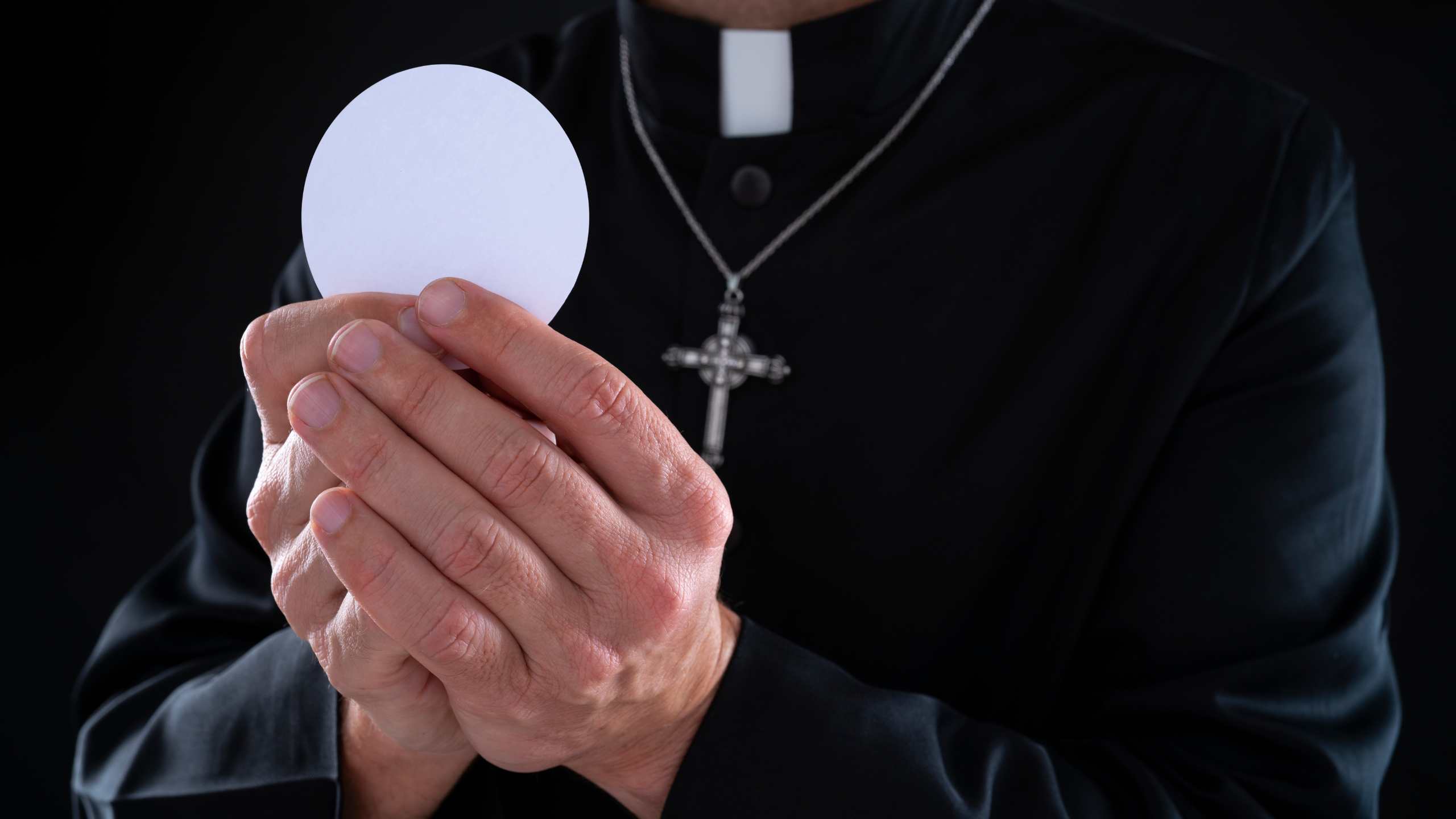As Catholics, perhaps there is no more important word in our vocabulary than transubstantiation. Do you use it? Do you know it? For certain, it’s not a word that we use often in everyday language, but transubstantiation is powerful and central to our faith.
What is Transubstantiation?
According to the USCCB, “Since the Middle Ages, the change of bread and wine into the Body and Blood of Christ has been called “transubstantiation.” This means that the substance of the bread and wine is changed into the substance of the Body and Blood of Christ. The appearances of bread and wine remain (color, shape, weight, chemical composition), but the underlying reality—that is, the substance—is now the Body and Blood of Christ.” (Source: United States Catholic Catechism for Adults, USCCB, Chapter 17. The Eucharist: Source and Summit of the Christian Life • p. 223)
Why Is It Important?
The Eucharist is described as “the source and summit of the Christian life” (CCC 1324). This means that all other sacraments and works of the Church are oriented toward the Eucharist, and it is the most important act of worship for Catholics.
In John 6:53-54, “Jesus said to them, ‘Truly, truly, I say to you, unless you eat the flesh of the Son of Man and drink his blood, you have no life in you. Whoever feeds on my flesh and drinks my blood has eternal life, and I will raise him up on the last day.”
What the Eucharist and Transubstantiation is Not!
Let’s be clear, if we truly believe that the eucharist is body, blood, soul and divinity of our Lord and Savior Jesus Christ, then we must defend it! You will hear many arguments made about what the eucharist is; a wafer, a piece of bread, a fallacy, a myth. And perhaps the grand daddy of them all, a symbol. Through the act of transubstantiation, the eucharist is none of these. It is our Lord Jesus Christ, fully present offered as a sacrifice for the salvation of our souls.



